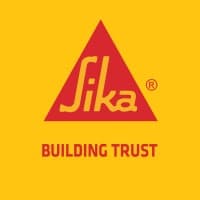
Transform product portfolio with assessment methodology
 Sika
SikaSummary
Evaluation methodology for sustainability evaluates products in the portfolio based on set criteria, promoting innovation and classifying offerings
Context
In 2023, Sika committed to the SBTi targets. The targets were validated in 2024. With SPM, Sika’s goal is to manage innovation and sustainability, minimizing risks and maximizing opportunities. One of the key levers for decarbonization identified is the development of new innovative solutions for the construction and industry. In addition to this, the company has set the target that all new product developments must be SPM-evaluated and classified as sustainable solution.
SPM is integrated in the company’s innovation process and mandatory for all new product developments.
Sustainability has always been assessed in the product creation process. However, Sika’s Sustainability Portfolio Management (SPM) methodology, based on the WBCSD Portfolio Sustainability Assessment (PSA) Framework, offers yet a more holistic approach and therefore allows for more detailed assessments.
Solution
Sika's Sustainability Portfolio Management (SPM) methodology is a strategic framework designed to manage innovation and sustainability simultaneously, minimizing risks, maximizing opportunities, and ensuring positive business impacts. SPM is a core component of Sika’s Sustainable Solutions strategy, aligning product performance with sustainability benefits and contributing to the United Nations Sustainable Development Goals (UN SDGs). This methodology integrates sustainability into Sika's innovation process, ensuring that all products are evaluated and developed with both performance and sustainability in mind.
The SPM methodology involves a standardized four-step approach applied across all product categories, including new and existing products. The steps are:
Segmentation:
This initial step involves selecting the Product Technology Application Combination (PTAC) and an internal reference product. It also includes gathering general data like company name, production location, and defining the SPM evaluation team.
Sustainability Evaluation:
Products are assessed against 59 criteria within 12 Sustainability Categories, including Supplier Sustainability, Reputational and Business Risks, Chemical Hazard and Exposure, and others. Each criterion is rated, and the ratings are consolidated to form a final Sustainability Classification.
Performance Evaluation:
Products are evaluated against 6 criteria within 6 Performance Categories, such as Technical Performance, Durability, and Cost Performance. Similar to the sustainability assessment, these ratings are consolidated into a final Performance Classification.
Classification:
The final step combines the results of the sustainability and performance evaluations, categorizing products into clusters. Products in Clusters A, B, and C are deemed Sustainable Solutions, with those in Cluster A receiving special branding as “More Performance – More Sustainable.” The goal is to transition all products towards these clusters while minimizing those in Clusters E and F.
The SPM methodology provides a comprehensive evaluation framework that reflects significant economic, environmental, and social impacts, essential for Sika's stakeholders, including customers and suppliers. This holistic approach is crucial in the context of growing sustainability trends in the construction and industrial markets, offering insights into sustainability-related risks and opportunities. By applying the SPM methodology, Sika aims to strategically develop and market products that align with its Sustainable Solutions strategy, supporting customers in meeting sustainability goals such as reducing Scope 3 emissions.
Impact
Sustainability impact
Climate
Scope 1, 2, 3
The portfolio view after SPM Evaluation enables the clustering of products into six clusters, with three positive, one neutral, and two negative clusters.
While quantification is complex, a reduction in product carbon footprint compared to an internal reference product, can be disclosed after conducting a study based on ISO14044 in the climate category. The SPM Evaluation contributes to a clear structuring of the company’s overall emissions reduction efforts.
Nature
SPM gives evidence on sustainability and performance categories. Customers receive clarity for decisions to use products that promote for example good air quality and minimize emissions of pollutants.
Product developments that achieve a positive classification may be rolled out and promoted, while those with negative classifications shall lead to actions to improve the product profile.
Business impact
Benefits
Managing innovation and sustainability: Management tool to integrate sustainability into strategic and operational processes. Clear understanding of sustainable products and of how sustainability is measured and communicated
Minimizing risks and maximizing opportunities: Steering and transforming the company’s product portfolio towards proven sustainability performance aligned with regulations, megatrends, and life cycle focus
Anticipating market needs: Forward-looking (beyond current regulation/legislation), identifying sustainability market signals and potential impact on product portfolio, supporting sales staff and innovation teams to address customer needs
Anticipate market developments and their potential impact on product portfolio: Supporting the business to address sustainability needs evolving in the market and to meet customers’ and stakeholders’ expectations both today and tomorrow
Enhancing corporate reporting: Evidence on the product sustainability performance based on a recognized and structured approach. Measurability of business impact
Increase transparency and consistency: Communicated results, by agreeing on requirements with which a high-quality SPM must comply across the entire product range
Gaining credibility and building trust: Enhanced confidence and credibility of products’ sustainability performance, attractiveness towards customers, business partners, staff, and talents
Costs
SPM is a Sika dedicated methodology. It considers the company’s specificities based on its identified material topics. For it to be implementable, it had to be aligned with the company’s innovation process in which it is integrated into.
The development and implementation of SPM requires:
Involvement of various functions throughout the organization: Product Sustainability, Product Management, EHS, Product Stewardship, Procurement, R&D, Operations
Developing tool for the implementation of the methodology
Defining SPM roles and dedicate responsible people
Evaluation process: setting up evaluation team and managing evaluation project in a stage-gate approach
Supporting teams worldwide in their evaluation processes
The cost quantification is variable depending on company specifics yet depend on the above cost items.
Implementation
Typical business profile
This initiative is most relevant to businesses with a large portfolio of products/brands. Moreover, it can be applied to different business functions, including risk management, strategy planning, and decision making.
Approach
Managing innovation and sustainability together, minimizing the risks, maximizing the opportunities, and creating a positive business impact: this is the purpose of Sika’s Sustainability Portfolio Management (SPM) methodology. SPM is integral to Sika’s Sustainable Solutions strategy and ensures that Sika’s products always combine performance and sustainability benefits.
The performance and sustainability categories represented within the SPM methodology are directly aligned to the sustainability topics material to Sika (Sika Materiality Analysis) and support the company’s contribution to the UN Sustainable Development Goals (UN SDGs). The SPM methodology is an integral part of Sika’s innovation process.
A standardized approach allows for an efficient product development evaluation and ensures accurate information for making decisions and benchmarking purposes. The SPM methodology applies to all product categories, including new product developments as well as existing products, and follows a four-step approach:

Figure 1: Sika’s SPM Methodology for product evaluation
Step 1 – Segmentation This step involves the selection of the Product Technology Application Combination (PTAC) and the selection of the internal reference product. This step also includes the provision of general data regarding the product and the evaluation, such as the legal entity (company name), production location, the evaluation gate, and the definition of the SPM evaluation team.
Step 2 – Sustainability Evaluation This step involves the detailed evaluation of the product against the 59 criteria within the 12 Sustainability Categories. As part of this assessment, each criterion is evaluated and assigned a rating. The individual criterion ratings are consolidated to generate the category rating. Once the assessment is complete, the category ratings are aggregated to provide the final Sustainability Classification.
Supplier Sustainability
Reputational and Business Risks
Chemical Hazard and Exposure
Regulatory Trends and Potential Forthcoming
Air Quality and Emissions
Health and Safety
Energy
Climate
Resources and Circularity
Packaging
Green Building
Cost Savings Downstream
Step 3 – Performance Evaluation This step involves the detailed evaluation of the product against the 6 criteria within the 6 Performance Categories. As part of this assessment, each criterion is evaluated and assigned a rating. The individual criterion ratings are consolidated to generate the category rating. Once the assessment is complete, the category ratings are aggregated to provide the final Performance Classification.
Technical Performance
Application Performance
Durability
Aesthetics/ Optics
Cost Performance
Others
Step 4 – Classification This is the final step of the SPM Methodology. In this step, the results of Steps 2 and 3 are combined to provide a final product classification. Products with a positive sustainability rating (Clusters A, B, and C) can be promoted as Sustainable Solutions. Products classified in Cluster A can additionally be promoted as “More Performance – More Sustainable” with special branding. Sika’s objective is to transition all products and developments towards Clusters A, B, and C and to minimize products classified in Clusters E and F.

Figure 2: SPM Portfolio structure & categorization clusters (A-E)
The Sustainability categories that form part of the SPM methodology are comprehensive and cover the sustainability topics material to Sika. Products assessed under the SPM methodology undergo a rigorous evaluation against 12 Sustainability Categories, ensuring that Sika Sustainable Solutions are fit for purpose. Similarly, the Performance categories that form part of the Sika Sustainability Portfolio (SPM) methodology are comprehensive and cover technology-specific topics ensuring our Sustainable Solutions are fit for purpose.
Sustainability is a focus area for many of Sika’s key stakeholders, including customers, suppliers, and peers. Sika’s SPM Methodology provides a clear and transparent framework against which products and solutions are evaluated, combining both sustainability and performance into a single concept.
The Sustainability and Performance categories cover criteria that reflect the significant economic, environmental, and social impacts of our products, as well as those that would substantively influence the assessments and decisions of our customers, suppliers, and other stakeholders. An example: As customers will have to report on their Scope 3 emissions or to achieve net zero goals, they must know about a set of sustainability and performance categories of products they were purchasing. SPM delivers data for those calculations. SPM follows a holistic approach to sustainability which is crucial for Sika because it helps the company to better evaluate its products in the context of increasingly relevant sustainability trends within the construction and industrial market segments. Applying a holistic approach provides relevant insights on sustainability-related risks and opportunities, and thus forms the basis of Sika’s SPM approach. By working with the SPM Methodology, Sika strategically develops and markets value-added products, systems, and services in line with the company’s Sustainable Solutions strategic focus area.
Stakeholders involved
SPM evaluations are collaborative processes involving a wide range of functions to effectively analyze a product. The interdisciplinary SPM project team includes representatives from the key disciplines identified as Rating Responsible within:
Each of the 12 SPM Sustainability Categories
And 6 SPM Performance Categories.
It is essential that all functions listed as rating responsible are represented within this project team.
Key parameters to consider
Initiative maturity: The SPM methodology is a well-established practice within Sika. Sika’s SPM has been rolled out in 2023 and was fully integrated into the R&D process in March, 2024.